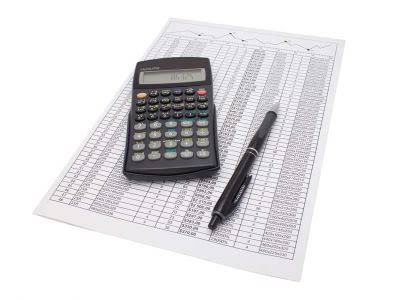
The Gross Sales account, which records the total sales revenue, would be paired with the Sales Discount account, which serves as the contra account for the Gross Sales account. Stepping up your contra account management game is made easier with a host of tools and resources at your fingertips. For starters, accounting software platforms like QuickBooks or Xero offer functionalities tailored to track these accounts precisely, complete with automated entries for common transactions like depreciation or returns. To keep a finger on the pulse of your contra accounts, you might also consider dashboards and reporting tools that offer real-time insights into these critical financial metrics. However, that $1.4 billion is used to reduce the balance of gross accounts receivable. Therefore, contra accounts, though they represent a positive amount, are used to net reduce a gross amount.
- You could explore comprehensive webinars and workshops focused on the nitty-gritty of contra accounts.
- If a customer returns a product, the ‘Sales Returns’ contra revenue account lowers the total sales revenue, reflecting the true income.
- A debit will be made to the bad debt expense for $4,000 to balance the journal entry.
- Contra Equity Account – A contra equity account has a debit balance and decreases a standard equity account.
- These accounts facilitate auditing and financial analysis by providing a detailed breakdown of adjustments made during a specific accounting period.
ACCOUNTING for Everyone

The key example of a contra equity account is Treasury stock, which represents the amount paid to buyback stock. Contra Liability Account contra expense account – A contra liability account is a liability that carries a debit balance and decreases other liabilities on the balance sheet. The contra asset account Accumulated Depreciation is deducted from the related Capital Assets to present the net balance on the parent account in a company’s balance sheet. This is the reason they are categorized as a contra account as the normal asset accounts have positive or debit balance. These contra assets in the balance sheet are reflected with the asset accounts they are paired with to equalize the balance. In general, the use of contra accounts helps to provide a more accurate picture of a company’s financial position and performance by showing the net revenue, net sales, or net balance of an account.

Sales Allowances
- It contains negative balances that offset the balance in a paired asset account on a company’s balance sheet, revealing the net value of the asset.
- Contra accounts are usually linked to specific accounts on the balance sheet and are reported as subtractions from these accounts.
- Accounts receivable (A/R) has a debit balance, but the allowance for doubtful accounts carries a creditbalance.
- Each type of contra account represents a different aspect of a company’s financial position.
At the same time, our Accounts Receivable Automation software and Accounts Payable Automation software makes tracking, managing, and processing crucial assets and liabilities — and their contras — easier than ever before. The Notes Receivable account documents the total value of any promissory notes held by the company. To obtain a cash payout before the note reaches maturity, you can sell these notes to a bank or other financial institution for some price below the note’s https://www.bookstime.com/ face value. A contra account is subtracted from its related account on the financial statements, resulting in a net balance. This provides a more accurate representation of the financial position of a company. Another type of contra account is known as “contra revenue,” which is used to adjust gross revenue to calculate net revenue, i.e. the “final” revenue figure listed on the income statement.
The Critical Role of Contra Accounts in Accurately Depicting Financial Position
- They adjust the balances of accounts to reflect the actual financial position of a company.
- The difference between an asset’s account balance and the contra account balance is known as the book value.
- A Contra Asset Account is an asset account having a credit balance that is related to one of the assets with a debit balance.
- If a company has a high or fast-growing allowance as a percentage of accounts receivable, keep a close eye on it.
- Contra revenue accounts are the dedicated detectives tracking down all the subtractions from a company’s gross revenue.
- Consider a business that offers an early payment discount to its customers, cutting their invoiced total by 3% if they pay within 1 week of invoicing.
On the other hand, if you’re looking at a high-flying growth stock that reports new revenue growth records each quarter but has a massive allowance for doubtful accounts, there may be problems ahead. Imagine a company that offers an early payment discount to its customers, reducing their invoiced amount by 5% if paid within one week of invoicing. In a given month, the company generates $100 thousand in gross sales but provides a total of only about $2 thousand in discounts that month. If every single buyer had taken advantage of the early payment discount, the company would have provided roughly $5 thousand in discounts during that same timeframe.
This is because it tallies two respective debit-credit entry pairs, thereby figuring out the net balance of the asset account. All in all, contra accounts are an important tool for businesses to use to understand their financial standing better. In this example, the accounts receivable is 10,000, and the allowance for doubtful debt contra account is 1,000, leaving a balance of 9,000. This occurs when the Online Accounting contra account is used to offset a credit balance in the related account.

How are Contra Accounts Used and Reported?

For example, if a company has a $10,000 accounts receivable balance, it may create a contra account called “Allowance for Doubtful Accounts” with a credit balance of $1,000 to offset the accounts receivable balance. This allows the company to reflect a more accurate balance for its accounts receivable. For example, a contra account is used to offset the balance in a company’s accounts receivable account.
